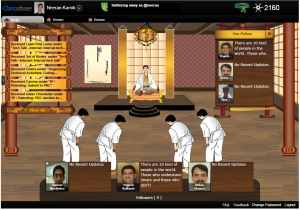Protoprint is a Pune based “social enterprise”, founded by an alumnus of MIT (USA), which has figured out how to take waste plastic from the waste that is picked by the waste pickers in Pune, and convert that into the raw material that is needed by 3D printers, and which can then be used to create any product using the 3D printer.
Here is an overview of what they do, from Mashable:
Protoprint was founded in early 2013 by Sidhant Pai, an environmental engineering student at the Massachusetts Institute of Technology. In the summer of 2012, Pai had been researching low-cost recycling technology around the same time his father began dabbling in 3D printing as a hobby.
“[I realized] that 3D printer filament” — the plastic, coil-like material used to mold 3D-printed creations — “was basic in its chemical composition. So, we started looking into whether it was possible to recycle the filament from waste plastic,” he says.
It was. After a brief research period, Pai partnered with Pune, India-based cooperative SWaCH, which employs “pickers” to sort through the city’s waste bins for plastic bottles. They developed a system: After the pickers collect the bottles, workers wash and run them through a FlakerBot shredding machine, and then melt the plastic and spool it into reels of filament.
“This really bridges the gap between cutting-edge technology and grassroots recycling,” Pai says.
The group is in its final stages of its pilot launch, and plans to begin commercial production by the end of the summer.
For more information about Protoprint and what they do, see their website, and their (FAQ)ref2.
In addition to this, they also provide 3D printing consulting and services for educational institutions and companies. Here are details:
We work collaboratively with companies and institutions interested in setting up 3D Printing Services for their students or employees. We set up Print Labs on and off campus, providing access to large format 3D printing facilities at affordable rates. In addition to high quality 3D printers, we offer a fully developed and customizable web portal and a thorough knowledge of the industry. Contact us to see how we might assist your institution.
For educational institutions:
A correctly implemented prototyping hub can provide an incredible value to students and young designers. We consult with educational institutions and schools and provide affordable case by case implementation plans taking into consideration the end use objectives of the institute. We also offer an easy to use web portal that can be customized to individual institutions, providing their students an added measure of accessibility. Contact us to learn more.
and for companies:
High Quality 3D Printers can provide professional designers with an efficient method to prototype and iterate on their designs. We provide companies with a detailed understanding of different 3D printing methods and empower them with targeted information and structure. We also offer fully developed web portal solutions to their employees, making prototyping easier and more intuitive. Contact us for more information.
References:

